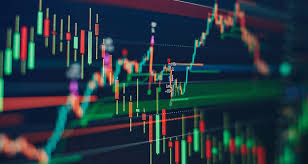
Mastering Crypto Futures Trading Signals for Profitable Strategies
In the world of cryptocurrency, the volatility and rapid price changes present both opportunities and challenges for traders. One effective approach to navigate this complex landscape is through the use of crypto futures trading signals. These signals provide investors with insights and predictions about future price movements, helping them make more informed trading decisions. To gain a deeper understanding of what these signals entail and how to use them to your advantage, crypto futures trading signals visit website for further resources.
Understanding Crypto Futures Trading Signals
Crypto futures trading signals are essentially indicators designed to help traders forecast price movements in the futures market. They can be generated through various methods, including technical analysis, fundamental analysis, or a combination of both. The key goal is to identify points of entry or exit for trades, potentially maximizing profits and minimizing losses.
Technical Analysis Signals
Technical analysis involves analyzing market data and historical price movements to predict future price behavior. Traders utilize various indicators and chart patterns to generate signals for crypto futures trading. Some of the most common technical indicators include:
- Moving Averages: These indicators smooth out price data to identify trends over a specific period. Traders often look at the crossover of short-term and long-term moving averages as signals to buy or sell.
- Relative Strength Index (RSI): This momentum oscillator measures the speed and change of price movements. An RSI above 70 indicates that an asset may be overbought, while an RSI below 30 suggests it may be oversold.
- MACD (Moving Average Convergence Divergence): This indicator shows the relationship between two moving averages. The MACD line crossing above the signal line can indicate a bullish signal, while crossing below can indicate a bearish signal.
Fundamental Analysis Signals
While technical analysis focuses on price trends, fundamental analysis considers external factors that might impact the asset’s value. These can include:
- Market News: Announcements relevant to the cryptocurrency market, such as regulatory changes, technological advancements, and significant partnerships can create volatility and impact price movements.
- Project Development: Information regarding updates, successful launches, or new token releases can influence investor sentiment and drive demand.
- Market Sentiment: Levels of fear or greed within the market can affect trading decisions. Tools like the Crypto Fear & Greed Index can offer valuable insights.
How to Use Crypto Futures Trading Signals

Utilizing crypto futures trading signals effectively requires a structured approach. Here are some steps to consider when implementing these signals in your trading strategy:
1. Selecting the Right Provider
Several platforms provide trading signals. It’s crucial to choose a provider with a proven track record. Look for reviews, success rates, and transparency in how their signals are generated.
2. Setting Your Trading Goals
Before beginning to trade, establish your financial goals and risk tolerance. Are you looking for short-term gains or long-term investment? Knowing your objectives can help tailor your trading strategy.
3. Combining Signals with Personal Analysis
While automated signals can provide valuable insights, it’s wise to do your own research. Analyzing signals in conjunction with your analysis can help reinforce your trading decisions.
4. Practice Risk Management
Risk management is vital in trading. Consider setting stop-loss orders to minimize potential losses. Never invest more than you can afford to lose, and diversify your trading portfolio.
Common Strategies for Crypto Futures Trading

Traders often develop specific strategies based on signals to maximize their success in crypto futures trading. Some popular strategies include:
1. Day Trading
This strategy involves buying and selling assets within the same trading day, capitalizing on small price movements. Traders will typically rely heavily on technical analysis signals and execute multiple trades throughout the day.
2. Swing Trading
Swing traders hold positions for several days or weeks, aiming to profit from expected price changes based on signals. This method combines elements of both technical and fundamental analysis.
3. Scalping
Scalping is focused on making small profits repeatedly from minor price differences. Scalpers often leverage high-frequency trading strategies and look for quick entry and exit points based on signals.
4. Trend Following
Trend following involves identifying the direction of an asset’s price movement (upwards or downwards) and trading in that direction. Indicators such as moving averages and trend lines are commonly used to spot trends.
Conclusion
Crypto futures trading signals can be powerful allies for traders aiming to succeed in the fast-paced cryptocurrency market. By combining solid signals with personal research and a well-defined trading strategy, investors can enhance their performance and navigate volatility more effectively. As always, thorough understanding and continuous learning will pave the way to becoming a skilled crypto trader.
